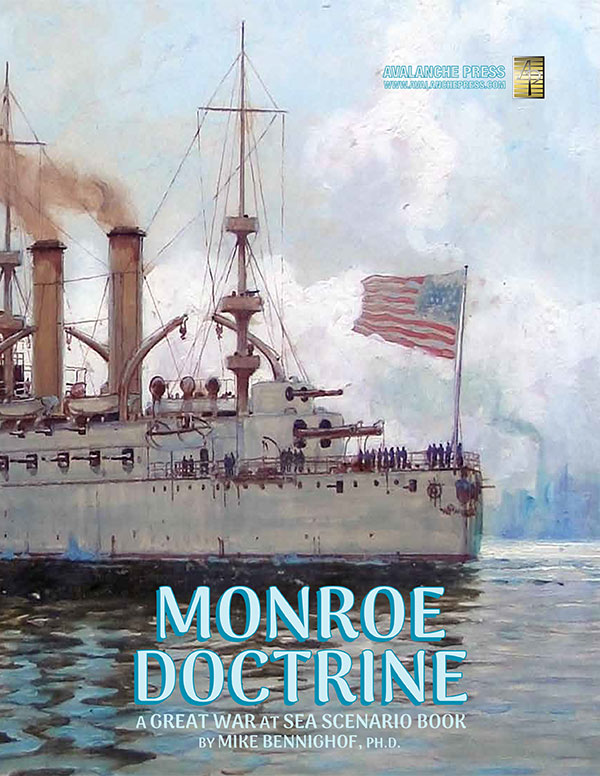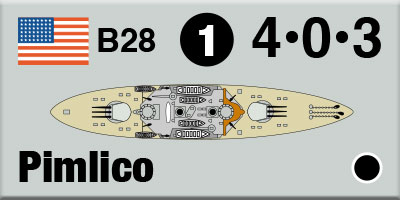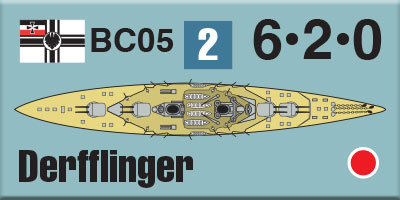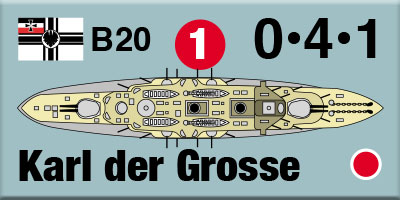| Monroe Doctrine:
Publisher’s Preview
By Mike Bennighof, Ph.D.
October 2024
 Great War at Sea: Remember the Maine tells the story of the 1898 Spanish-American naval war in the Caribbean, and explores some of the options available to both sides. And we also look at how the war might have gone, had it broken out a little earlier or a little later. It’s pretty tightly focused on the Spanish-American War, as it should be. But there’s a lot more to explore both with this war, and with others that could have erupted in the Caribbean Basin during the years around the turn of the last century. Great War at Sea: Remember the Maine tells the story of the 1898 Spanish-American naval war in the Caribbean, and explores some of the options available to both sides. And we also look at how the war might have gone, had it broken out a little earlier or a little later. It’s pretty tightly focused on the Spanish-American War, as it should be. But there’s a lot more to explore both with this war, and with others that could have erupted in the Caribbean Basin during the years around the turn of the last century.
That’s the focus of Monroe Doctrine, a story and scenario book for Remember the Maine, without its own pieces or map. You’ll also need pieces from Jutland 2e to play all of the scenarios. You might also want Far Side of the World and Coast Defenders, but you can play all of the scenarios through the magic of sister-ship-substitution without those.
Great War at Sea is our game of naval operations in the era of the First World War; we stretch that definition to go back to the 1890’s and forward to the 1920’s. It’s the age of steel battleships and big guns. Players form their ships into fleets, move those fleets on the operational map, and then if they meet, fight on the tactical map. The operational map shows the theater where the campaign took place (in the case of Remember the Maine, that’s the Caribbean Basin); the tactical map is a field of blue hexagons where the ships maneuver and fire guns and launch torpedoes. It’s not difficult to learn and play, as wargames go.
Each game in the Great War at Sea series is complete; it includes everything you need to play. And then we add extra scenario books, like Monroe Doctrine, that give you even more ways to play, sometimes by combining the pieces of more than one game. That’s how it is with Monroe Doctrine: you’ll need both Remember the Maine and Jutland Second Edition to play all of the scenarios.

Monroe Doctrine is based on actual, planned, and potential conflicts in the Caribbean, mostly revolving around the U.S. Navy trying to eject the Spanish from the region, or trying to prevent the Germans from gaining a foothold there. It’s a scenario book, with about half of it devoted to the background story of the campaigns and the fleets that fought them, and the other half going to new scenarios (40 of them). Monroe Doctrine allows us to play some more on the wonderful map of the Caribbean Basin, a geographically interesting battle space framed by the coasts of South and Central America and the long island chain of the Antilles (both Greater and Lesser).
The new Second Edition of Remember the Maine truly is a new edition, with a complete re-imagining of the old scenario set. All of that new material shoved a lot of the original’s ideas out of the book. Some of that consists of tiny, one-gunboat scenarios that we’ll probably eventually wrap into a download. But the game includes ships we didn’t use, and they need to be used. That gives us two new chapters, that lead off Monroe Doctrine.

Remember the Maine’s set of pieces includes battleships either designed and not built in the years after the Spanish-American War, and some that were built, but only after the brief conflict had ended. Those most definitely need to be used in battle, so we get to fight the Spanish-American War in 1905 and in 1908, making use of these extras. That brings in more pre-dreadnought battleship action, which is a good thing, and we get to see the outcome of Spanish and American naval building programs. The Americans were already planning more battleships than the Spanish, but after the Disaster of 1898 the Spanish Armada went into a decade of decline. We get to see what they might have had otherwise, and if that improved fleet would have been sufficient to protect Spain’s last footholds in the Americas.
The third chapter includes a historical scenario, the 1914 cruise of the German light cruiser Karlsruhe through the Caribbean. She sank 16 merchant vessels before she accidentally blew up. She appears in Far Side of the World and can raid Allied shipping, but that’s a game at a completely different scale. This time we get to play out the Karlsruhe adventure at the usual Great War at Sea scale and method, on the Caribbean map. She is faster than the elderly armored cruisers sent to pursue her, but not very powerful; she also needs to avoid blowing up.

On 1 July 1914, Kaiser Wilhelm II issued an informal recommendation for the German contingent for the 1 October opening of the Panama Canal. The Americans planned an elaborate ceremony, and Germany would be represented by its latest, most modern ships: the battle cruisers Seydlitz and Derfflinger (the latter was still fitting out, but expected to commission by mid-September), and the light cruisers Karlsruhe and Graudenz. They would then sail on to San Francisco for the Panama-Pacific International Exposition.
Had the war broken out slightly later, that powerful squadron could have been caught in the Caribbean. And that would pose a powerful threat to British interests that could only be matched by battle cruisers of their own. And that makes for a great game situation on our Caribbean map, using pieces from Jutland for a chapter studying this potential situation.
In the early years of the 20th Century, the German naval planning staff developed Operations Plan III, while the Americans put together War Plan Black. Both of these posited a German leap across the Atlantic to seize Puerto Rico as a base for further operations against the American mainland; curiously, neither staff had any inkling of the other’s plans.

Here we get some much larger fleet operations, but again using pre-dreadnoughts, no airplanes, no submarines. Just pure battleship-on-battleship action. You to put all of those pre-dreadnoughts in Remember the Maine to use, and those German pre-dreadnoughts from Jutland that are just so many floating targets by 1914 but still very potent weapons a decade earlier.
Note: No, it’s not a re-make of the Plan Black game we did in the last century, before some of you were born. That one was set in the 1920’s; this time it’s a generation earlier.
But what if the Germans started in the Caribbean, with colonies and bases of their own? In the peace negotiations that ended the 1864 German-Danish War, the Danish King Christian IX secretly offered to cede all of Denmark’s colonies to Prussia if Denmark could hold onto the Danish-speaking areas of northern Schleswig; when that failed, he offered to bring Denmark into the German Confederation, with both Schleswig and Holstein a part of the kingdom. The Prussians turned him down both times, but had they accepted, Greenland, Iceland and the Danish West Indies would have been part of the German Empire in 1914. That gives us our sixth and final chapter, with a German cruiser squadron based in the Caribbean at the outbreak of war and the British and French having to deal with that.
So what we have in Monroe Doctrine are six chapters of hot pre-dreadnought action, all on that wonderful Caribbean map. You get to use your ships in new situations, and play out the story.
Click here to join the Gold Club.
See your Gold Club Insider newsletter for ordering information.
Sign up for our newsletter right here. Your info will never be sold or transferred; we'll just use it to update you on new games and new offers.
Mike Bennighof is president of Avalanche Press and holds a doctorate in history from Emory University. A Fulbright Scholar and NASA Journalist in Space finalist, he has published a great many books, games and articles on historical subjects; people are saying that some of them are actually good.
He lives in Birmingham, Alabama with his wife, three children, and new puppy. He misses his lizard-hunting Iron Dog, Leopold.
Daily Content includes no AI-generated content or third-party ads. We work hard to keep it that way, and that’s a lot of work. You can help us keep things that way with your gift through this link right here.
|
